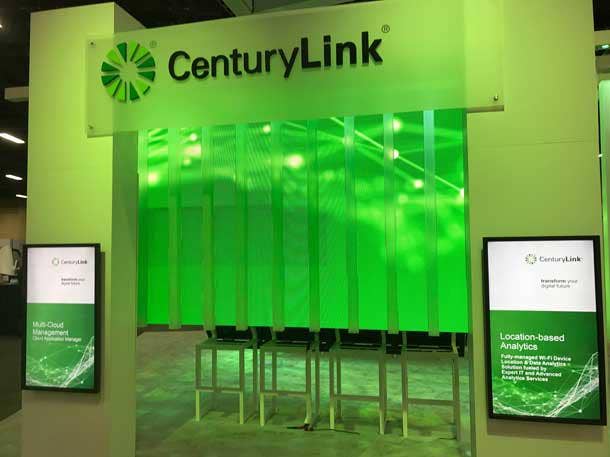CenturyLink Enterprise Customers ‘Buying Again’ While SMB Sales Slumps
The telecommunications company is seeing a ‘marked change’ in enterprise engagement as businesses look to speed up digital transformation efforts as a result of COVID-19. But on the other hand, the pandemic has slowed SMB sales; a segment of customers that have felt the worst impact of the resulting economic downturn, CenturyLink executives said.

After an initial period of crisis management and adjusting to a new normal, enterprises have resumed their digital transformation efforts. And enterprise revenues, along with consumer demand for connectivity, helped carry telecom giant CenturyLink through a quarter impacted by the COVID-19 pandemic, according to Jeff Storey, CenturyLink‘s president and CEO.
Enterprise sales orders grew year-over-year for dynamic, fiber-based services as these companies started “buying again” in the second fiscal quarter, Storey said.
“[Enterprises] see that using next-generation technology enabled them to adapt their business models more rapidly … As customers moved beyond the first wave of crisis response, we‘ve seen a marked change in their engagement and increased urgency in their dialog around longer-term digital transformation of their work environment,” he told investors during CenturyLink’s Q2 2020 earnings call on Wednesday evening.
[Related: CenturyLink Nixes Commissions On Some Accounts; Partners Protest Potential ‘Disastrous’ Impact]
Enterprise, a segment that includes CenturyLink‘s high-bandwidth data services, managed services and SD-WAN services, climbed by about 1 percent to $1.43 billion during the carrier’s fiscal second quarter compared to $1.41 billion in 2019’s Q2.
CenturyLink in Q1 2020 said that it saw a 30-40 percent growth in internet backbone traffic and a correspondingly significant increase in average usage across its voice and conferencing platforms compared to typical traffic levels before the pandemic hit. Storey said enterprise demand continues to be high for CenturyLink‘s cloud, security, hybrid WAN, edge computing and collaboration services.
Monroe, La.-based CenturyLink generates about three-quarters of its revenue from business services, a segment that had been stressed in recent quarters because of small and medium-sized business revenue. The SMB segment, however, is now in arguably worse shape after bearing the brunt of the impact from the pandemic.
Small and medium business sales fell 6.1 percent during the quarter to $646 million compared to $688 million in Q2 2019. Storey said that CenturyLink will be actively working to grow its SMB customer base in future quarters. The carrier hopes to attract more SMB customers in the same way it‘s gained traction with enterprises, through its fiber-based network offerings, together with services such as embedded security, edge computing, IP enablement and managed services, Storey said.
In addition to COVID-19, the SMB segment continued to be plagued by legacy voice declines, said CenturyLink‘s CFO Neel Dev. “We are monitoring [this segment] and working closely with our customers,” he said. ”Over the long-term, we believe SMB represents a growth opportunity for us … it’s a large addressable market.”
CenturyLink said it has more than 170,000 on-net buildings.
Wholesale revenues also continued to slump during Q2, falling 6.1 percent to $948 million from $1.01 billion in the year-ago quarter. “We continue to expect these customers to prioritize spending with other vendors in this environment,” Dev said, adding; ”We are seeing more traction with carriers as they invest in 5G.”
Consumer revenues continued its downward trajectory, falling 5.3 percent to $1.32 billion during the quarter compared to Q2 2019‘s result of $1.39 billion. Storey in 2019 revealed that the carrier was considering shopping around its consumer business. However, CenturyLink has been pleasantly surprised with the demand for broadband it‘s seeing from the consumer segment right now as many employees continue to work from home as a result of the pandemic, Storey said.
“The economic effects of the pandemic created uncertainly for our customers, partners, the company, and the market in general. It‘s also highlighted the absolutely essential and durable nature of CenturyLink’s services and infrastructure in an all-digital world,” Storey said. ”We own the critical infrastructure -- everything from the extended fiber network, to the deep interconnection relationships required to deliver customers scalable, secure network that is easily and flexibly consumed.”
For the quarter which ended on June 30, CenturyLink reported net income of $377 million in Q2 2020, a slight increase compared to last year‘s result of $371 million. The provider reported total revenue of $5.19 billion and diluted earnings per share of 35 cents, a decline of 3.4 percent compared to $5.37 billion and 35 cents per share in the year-ago quarter. CenturyLink’s revenue came in just slightly above Wall Street analysts’ estimate of $5.14 billion.
Centurylink in June told its channel partners that it would be ending payment on commissions to agents on rural healthcare accounts, which prompted immediate backlash from a group of partners. CenturyLink said at the time that the decision was made in order to comply with an FCC order that went into effect on July 1. CenturyLink partners told CRN that the telecom provider was misinterpreting the FCC order, which could have unintended “disastrous” results for both agent partners and healthcare providers.